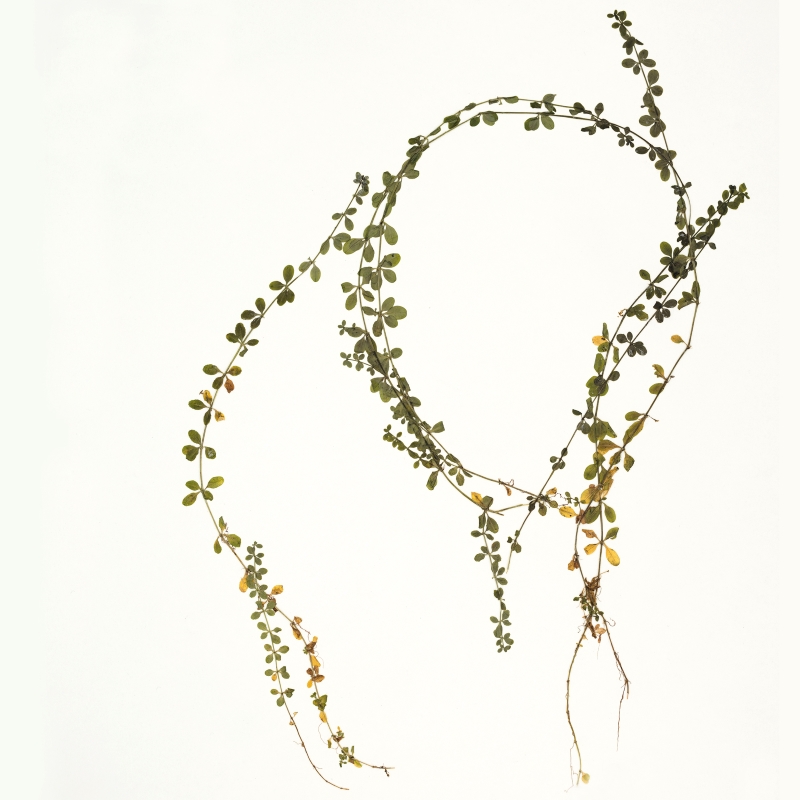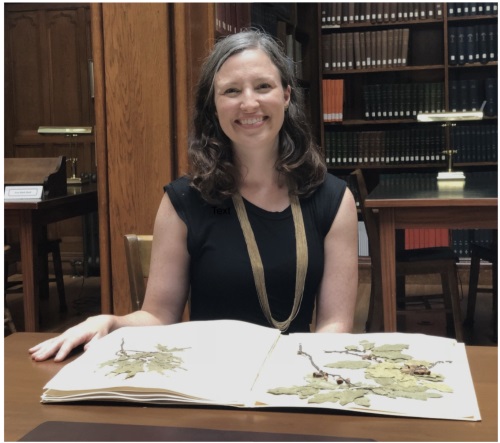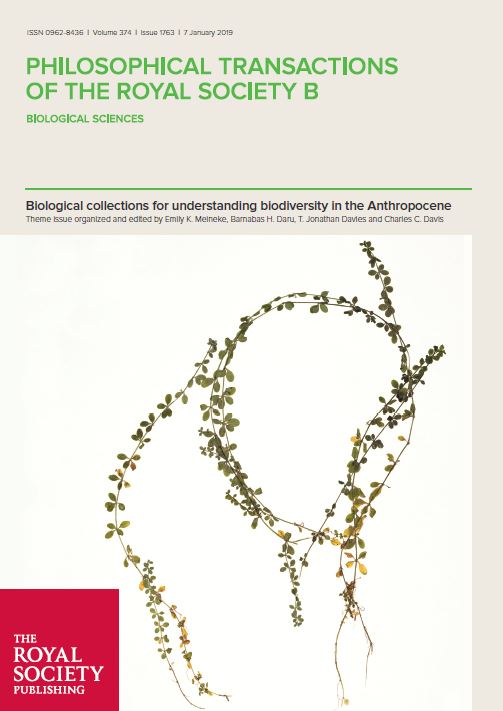The latest issue of Philosophical Transactions B provides examples of how the billions of plant, fungal, and animal specimens kept behind the scenes in natural history museums have the potential to transform the field of global change biology.

Human impacts, such as climate change, urbanization and pollution, are changing what species live on earth and how they function. Yet, our knowledge of how we affect biodiversity and natural resources is limited due to a lack of long-term studies that span from before humans began to influence our environment to today. Museum specimens are underused given their capacity to reveal patterns that are not observable from other data sources. The latest issue of Philosophical Transactions B provides examples of how the billions of plant, fungal, and animal specimens kept behind the scenes in natural history museums have the potential to transform the field of global change biology. We spoke with one of the Guest Editors, Emily Meineke from Harvard University, about the issue.

Can museum specimens really be relevant to solving the global environmental problems that we see today?
Yes – the drive behind this themed issue is that specimens hold unique data for understanding how humans have changed the biosphere. Natural history collections span from now until prior to the acceleration of climate change and therefore hold unique information about biological processes for which we have no other baseline data, e.g., the spread of invasive species, exposure to pollution, novel species interactions. Our hope is that this issue will spark broader use of specimens for fundamental and applied research.
What do you think is the most exciting potential application discussed in the papers?
For me, the most exciting potential is for specimens to inform habitat restoration. For example, you might imagine a plant specimen that contains data about past plant communities, plant interactions with other species, and the timing of plant flowering and fruiting could directly inform which plants to introduce where. This is especially relevant for forest restoration efforts, which are ongoing due to the loss of canopy species to invasive insects. I find little evidence for this use of specimens in the restoration literature or when I talk to colleague who work in restoration, and this remains an exciting frontier.
Did you learn anything new when editing the papers?
My focus is plants and insects, and the wide variety of taxa represented in this issue opened my eyes to new uses of specimens. I was especially interested in how specimens have been used to track infectious disease spread. For example, Schmitt et al. details the roles of specimens for understanding the spread of chytrid fungus, which is a major cause of amphibian decline.

What’s the biggest take-away message from the papers in the issue?
The big idea I hope readers will take away from this is that natural history collections hold diverse, unique data for understanding global change and are therefore invaluable. Many collections are imperilled by budget cuts and associated issues with infrastructure and reduced personnel. Natural history collections hold unique roles in education and research and therefore deserve investment by governments, universities, and local communities. As scientists, our charge is to continue to innovate within collections.
How was your experience of being a Guest Editor on Phil Trans B?
It was very valuable for me as an early career researcher to see under the hood and into how papers are born, from soliciting reviewers to accepting papers. I learned a lot from consolidating the reviewers’ and my feedback into key points the authors could focus on to improve their papers.
Tell us a bit about your own research
I’m a global change biologist, and I’m fascinated by how interactions between plants and insects are changing today as a result of human influence. My work is diverse and has covered a range of topics along these lines, from how urban heat islands affect pests to how global climate change has influenced historical insect damage and created novel communities.
Keep up to date with the latest issues of Philosophical Transactions B by signing up for article alerts, and browse previous theme issues of the journal.






